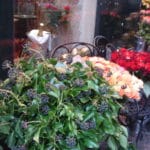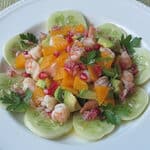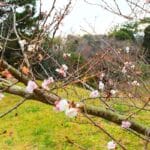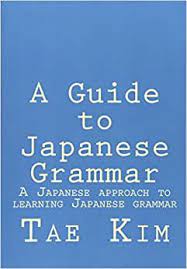
30 Best Japanese Blogs to Learn About the Language, Culture and More
The World Wide Web has a ton of great material for Japanese learners.
You already know how to learn Japanese with dramas and movies.
And now we have another resource that can complement your lessons and other learning methods: Japanese blogs.
So, let’s get on with these fantastic websites for learning all things Japanese—language, culture and then some.
Contents
- 1. めろんカフェ (めろん かふぇ) — Melon Cafe
- 2. 野菜のごはん (やさいのごはん) — Veggie Dining
- 3. プチタンタン (ぷちたんたん) — Petit Tintin
- 4. おうちごはんとおかしとねこ — Homecooking, Sweets and Cat
- 5. やせっぽちソプラノのキッチン2 (やせっぽちそぷらののきっちん2) — Skinny Soprano Kitchen 2
- 6. 四季フォトノート (しきふぉとのーと) — Seasonal Photo Notebook
- 7. これでいいよねっ!— It’s Good Like This
- 8. のんべんだらり — Doing Nothing
- 9. あみあみふむふむ&あみぐるみブログ (あみあみふむふむ&あみぐるみぶろぐ) — Amiami FumuFumu & Knitted Stuffed Toy Blog
- 10. ほぼ日刊イトイ新聞 (ほぼにっかんいといしんぶん) — Almost Daily Itoi Publication
- 11. CINRA
- 12. 音楽ナタリー (おんがくなたりー) — Music Natalie
- 13. 一の太刀 (いちのたち) — First Sword Strike
- 14. やさしい日本語ブログ(やさしいにほんごぶろぐ) — Easy Japanese Blog
- 15. NHK’s Learn Japanese Blog
- 16. 日本語ラーニングサポート(にほんごらーにんぐさぽーと) — Nihongo Learning Support
- 17. 日本語教師のネタ帳 (にほんごきょうしのねたちょう) — Japanese Teacher’s Notebook
- 18. Tamai.net
- 19. AMARC
- 20. Kansai Odyssey
- 21. Tofugu
- 22. GaijinPot
- 23. Maggie Sensei
- 24. Tae Kim’s Blog
- 25. How to Japanese
- 26. Japan Subculture Research Center
- 27. Unseen Japan
- 28. Jcastle
- 29. Uncanny Japan
- 30. Kowabana
- Where to Find Blogs in Japanese
- How to Read the Blogs: Tips for Approaching Blogs in Japanese
- And One More Thing...
Download: This blog post is available as a convenient and portable PDF that you can take anywhere. Click here to get a copy. (Download)
1. めろんカフェ (めろん かふぇ) — Melon Cafe
True to its name, this is a melon-colored blog run by Melonpan Mama. The blog is brightly-colored and full of food and recipes!
Why you should read it: The author employs advanced grammar, native-level phrases and a combination of plain, polite and very polite language.
Not only will your vocabulary and comprehension go through the roof while perusing her years’ worth of writing, but you’ll also be able to impress the locals when you visit Japan.
2. 野菜のごはん (やさいのごはん) — Veggie Dining
As its name suggests, this is a recipe blog dedicated to meat-free cooking. The blog is rather old (the last post was from way back in 2009), but it has a clean and simple layout, so no worrying about where you are and what buttons to click on.
Why you should read it: As soon as you click on any post, you’ll encounter blocks of Japanese text in the formal register. That means you can study standard Japanese and be treated to a ton of eye-catching photos.
3. プチタンタン (ぷちたんたん) — Petit Tintin
プチタンタン features recipes (mostly sweets) and crafts. I dare you to resist attempting every single recipe and craft on this blog: you’ll most certainly fail.
Why you should read it: The writing on プチタンタン is short and poetic. There are no paragraphs: in fact, there are hardly any full sentences (or long sentences, at least). Most of the writing is informal, and the generous use of onomatopoeia makes this a good source of low-stress learning that will fill you up with vocabulary before you’ve finished your veggies.
4. おうちごはんとおかしとねこ — Homecooking, Sweets and Cat
Not only do JoliJoli and her husband have three soft, fluffy Abyssinian cats, but her home cooking blog is visually stunning and full of years’ worth of recipes. If the photos don’t reel you in, maybe the cats will.
Why you should read it: Each blog contains about a postcard’s-worth of text, broken down into short sentences and small blocks so you’re not overwhelmed. The best feature is the レシピ (れしぴ) or “recipes” page, where categories are marked by custom silhouette drawings of food.
5. やせっぽちソプラノのキッチン2 (やせっぽちそぷらののきっちん2) — Skinny Soprano Kitchen 2
Upon entering Skinny Soprano Kitchen 2, readers are immediately greeted by calming leaves and text in various hues of green. The blog boasts of hundreds of recipes, including green tea financiers, roast chicken thighs with vegetables and blueberry cheesecake.
Why you should read it: Skinny Soprano Kitchen 2 reads a little more like a textbook in its language than the other blogs, but the vocabulary is both advanced and useful for day-to-day experiences.
The blogger uses the kind of vocabulary you might see on the Japanese Language Proficiency Test (JLPT) N2 or N1 (the top two levels of the test). At the same time, they’re in full sentences arranged into one or two lines each, so there are no overwhelming blocks of Chinese characters.
6. 四季フォトノート (しきふぉとのーと) — Seasonal Photo Notebook
The Seasonal Photo Notebook is filled with beautiful photos and writing on the four seasons in Japan’s 関西 (かんさい) region. As its tagline reads, “It is a photo gallery blog to introduce the changing of seasons in Kyoto, Osaka and Nara.”
Why you should read it: The Seasonal Photo Notebook is an exercise in learning 漢字 (かんじ), both utilitarian and specialized. Posts average between 300 and 400 words, and because the photos are accompanied by relevant comments, there’s the added element of visual connections.
7. これでいいよねっ!— It’s Good Like This
The author moved from Mikawa Bay in Aichi Prefecture to the remote island of Sakushima, which is why this blog is also called Sakushima Like.
She writes about her leisurely island life complete with stunning photos. Additionally, she travels around the country and takes pictures of her wanderings.
Why you should read it: From a cultural standpoint, Sakushima Life provides a glimpse into life on a small, remote island, 離島僻地 (りとうへきち). From a linguistic point of view, this gives you a chance to read plain form Japanese.
The blogger uses casual Japanese, but with a few polite sentences thrown in. Where 漢字 can be used, 漢字 is used liberally. Never fear, though, as the posts are short (less than 200 words) and full of stunning landscapes from the region.
8. のんべんだらり — Doing Nothing
Doing Nothing is all about small-town Japanese life. Kasanyarome’s blog, like their 田舎 (いなか, rural) lifestyle, is low-key, simple, quiet and aesthetically pleasing—plus it features a cat, as you can see in the blog’s profile photo.
Why you should read it: Readers get a glimpse of 田舎 life, plus exposure to authentic, colloquial Japanese with varied levels of difficulty. Most of the writing is about the weather, a perpetual concern for 田舎 residents, but Kasanyarome also writes about food, daily life and animals.
9. あみあみふむふむ&あみぐるみブログ (あみあみふむふむ&あみぐるみぶろぐ) — Amiami FumuFumu & Knitted Stuffed Toy Blog
Follow Kappa-chan (a knitted and stuffed kappa toy) as he knits, travels, eats, socializes and lives along the sea. The posts are mostly photographs of Kappa and his other あみぐるみ (knitted stuffed toy) friends.
Why you should read it: The blog offers plenty of opportunities for real, meaningful reading practice, and the posts are written at about a first-year Japanese learner’s (someone who’s in their first year of studying Japanese as a foreign language) level. At the same time, it’s replete with 漢字, so even advanced readers can benefit.
10. ほぼ日刊イトイ新聞 (ほぼにっかんいといしんぶん) — Almost Daily Itoi Publication
You may have already heard of this site if you’re deep enough in the Japanese online blogging scene. But if this is your first time hearing of it, I envy you!
Created by 糸井重里 (いといしげさと), ほぼ日 covers pretty much every topic that Itoi’s interested in—lifestyle, culture and more.
Why you should read it: Not only will you get in some advanced Japanese practice, but you’ll also be treated to a treasure trove of insightful writing on all things Japan.
11. CINRA
Like ほぼ日刊, CINRA also covers a wide variety of topics, but focuses more on music, cinema, art, books, fashion, entertainment, etc.
Why you should read it: You’re going to pick up vocabulary related to music, the arts and entertainment on this website. Also, some of the articles cover fun topics that you won’t often find in, say, Rolling Stone.
12. 音楽ナタリー (おんがくなたりー) — Music Natalie
Music Natalie gives you all the latest tidbits about Japanese music artists in one place. You’ll get a taste for how the music industry is like in Japan and compare/contrast it with its Western counterpart.
Why you should read it: If you’re a fan of any kind of Japanese music, I strongly recommend subscribing to this blog. And, as you can imagine, you’ll also get a ton of practice deciphering and learning vocabulary related to music.
13. 一の太刀 (いちのたち) — First Sword Strike
If there’s one martial art that’s uniquely Japanese, it has to be 剣道 (けんどう). You can think of it as the Japanese version of fencing, though it’s more accurate to say that it’s descended from the style of swordmanship that 侍 (さむらい) used long ago.
Why you should read it: Compared to the more “official” website of the All Japan Kendo Federation, 一の太刀 is a bit more accessible. There’s also some thoughtful analysis in here about 剣道 concepts like 構え (かまえ or “stance”) and 試合 (しあい or “match”).
Plus, if you enjoy watching 時代劇 (じだいげき) or period dramas, those fight scenes and expositions about sword techniques will suddenly become much more comprehensible!
14. やさしい日本語ブログ(やさしいにほんごぶろぐ) — Easy Japanese Blog
Easy Japanese Blog is exactly what it sounds like: a Japanese site that even (relative) beginners to the language can get through in one piece.
Why you should read it: Meika-sensei tags each post according to difficulty level, so you shouldn’t have much trouble finding appropriate reading exercises for you. She also includes 振り仮名 (ふりがな) in all of her posts, but you have the option to turn these off in case you want to review the exercises minus the training wheels that 振り仮名 provide.
15. NHK’s Learn Japanese Blog
Similar to やさしい日本語, NHK’s Learn Japanese blog covers the fundamentals of the Japanese language from ひらがな (hiragana) to basic conversations and culture.
Why you should read it: You’ll never get bored with the exercises on this blog. They come in the form of multiple-choice questions, fill-in-the-blanks and rearranging words to make a grammatically correct sentence. Plus, it’s NHK, so you can be sure that the materials are updated and reliable.
16. 日本語ラーニングサポート(にほんごらーにんぐさぽーと) — Nihongo Learning Support
The Nihongo Learning Support blog is run by a language school based in Shinjuku. Essentially, they’re a tutoring site where you can book professional native Japanese teachers to help you learn the language.
Why you should read it: The Japanese version of the blog can give intermediate learners ample reading practice in 日本語. If you’re a beginner and you’re struggling, you can always switch the website to English, Korean, Chinese (traditional and simplified) or Thai, whichever is your native language—though I strongly recommend getting used to immersing yourself in authentic materials early on.
17. 日本語教師のネタ帳 (にほんごきょうしのねたちょう) — Japanese Teacher’s Notebook
As its name suggests, 日本語教師のネタ帳 is run by a Japanese teacher who has extensive notes on teaching his native language to students from all over the world.
Why you should read it: The lessons on this website come in various formats like essays, videos, language notes and more. You’ll find topics that aren’t often discussed in standard textbooks like the subtle differences between なぜ and どうして (both of which can be translated as “why” but aren’t necessarily interchangeable).
18. Tamai.net
True to its name, this blog is run by a man named 玉井裕也 (たまいゆや). As the 日記 (にっき) in the name might clue you in on, it’s essentially his personal diary. He initially started it to document museums and similar establishments around Japan, but has since branched out into other topics.
Why you should read it: I remember someone once told me that learning Japanese isn’t just learning a new writing system and grammar—it’s also learning a whole new way of thinking. And what better way to gain access to someone’s honest, unfiltered thoughts than his diary?
19. AMARC
A quick glance through this blog will immediately tell you that it’s a fashion and lifestyle blog. (Just scrolling down this site makes me feel like I’m leafing through a magazine!) It’s run by 大草直子 (おおぐさなおこ), a stylist and editor.
Why you should read it: If you’re into fashion (Japanese or otherwise), there are few better blogs to follow than this one.
And since AMARC is a picture-heavy blog, you can easily get images to associate with the text, making it easier to recall the new vocabulary you learn.
20. Kansai Odyssey
Kansai Odyssey is run by husband-and-wife team Jun and Sarah. Jun is from Osaka, while Sarah was born and bred in the United States. Together, they document everything you need to know about the 関西 region in Japan—its sights, sounds and quirks.
Why you should read it: If you’re interested in the 関西 region of Japan at all, this blog has you covered. There’s an option to switch the blog entirely to English, but if you really want to immerse yourself in both the Japanese language and culture, I suggest reading it entirely in 日本語.
21. Tofugu
If you came to this post specifically looking for “blogs about Japan” rather than “blogs written in Japanese,” we’re going to talk about the former from here on out!
Hands down, Tofugu is one of the freshest and most creative Japanese learning blogs out there. The site shares a lot of information about Japan and its standard language, and there’s a particular emphasis on culture.
Why you should read it: The posts are comprehensive, well-written and illustrated with a variety of photographs, animations and videos. Posts often include a reference section at the end so you can keep exploring further. The topics are eclectic, and there are occasional Q&As with interview subjects who’ve experienced it all firsthand.
22. GaijinPot
You probably know GaijinPot best for its job board that posts employment opportunities in Japan. However, it also has a dedicated blog on living in the country.
Why you should read it: GaijinPot is like the slightly more serious sibling of Tofugu. It covers much of the same ground as the latter, but with an emphasis on giving you information in a digestible format. If that’s more your cup of tea, give this one a shot (or a drink, as it were).
23. Maggie Sensei
Maggie Sensei is on a mission: to teach Japanese in a fun way. Her blog is packed to the rafters with entertaining lessons about common day expressions used on the streets of Japan—not necessarily the ones you’ll come across in text books or the classroom.
Why you should read it: Post topics run the entire gamut of language and culture with categories such as Japanese culture, Japanese manners, Japanese songs, sentence patterns, business and colloquial speech.
Each post is succinct and lovingly written. And since Maggie is a dog lover, the posts often contain captioned photographs of dogs, who act as her teaching assistants.
24. Tae Kim’s Blog
Tae Kim has a useful blog on various aspects of learning Japanese. It’s undoubtedly a great resource for those who want to improve their understanding of the language.
Why you should read it: There are more than ten different blog categories including colloquialisms, culture, grammar, media, reviews, vocabulary and personal. There are also posts related to learning Chinese and Korean. And if you liked his book “A Guide to Japanese Grammar,” you’ll undoubtedly enjoy this blog.
25. How to Japanese
How to Japanese is a fabulous resource compiled by writer and translator Daniel Morales. This vast reservoir of posts has Daniel sharing things that he wishes people had told him when he started out studying the language.
Why you should read it: Words and phrases are explored in detail with clear, precise explanations. Daniel’s expertise and superb writing lead the reader gently through some of the trickier aspects of learning the Japanese language. Within the posts, you’ll discover lots of essential grammar and vocabulary as well.
26. Japan Subculture Research Center
Want to know more about the darker aspects of Japanese society? This blog contains tons of juicy tidbits on topics like the yakuza, the country’s infamous 99% conviction rate and others that aren’t normally covered in mainstream media.
Why you should read it: Some articles from other publications like The Los Angeles Times are translated into Japanese, like this one. It’s an old article, but can give you adequate reading practice!
27. Unseen Japan
Like Japan Subculture Research Center, Unseen Japan covers non-mainstream topics—though it’s much lighter in tone than the former. You can read about random topics like how long a subway card can last and a Buddhist statue turning pink (yes, really).
Why you should read it: Pick up random vocabulary words that don’t show up in your textbooks like 花粉症 (かふんしょう) or “hay fever”—a common (and rather irritating) condition that tends to spike around the spring season in Japan.
28. Jcastle
Do you happen to have this very specific fascination with Japanese castles? Considering the country’s rich history, it’s no surprise that Japan has 城 (じょう in on’yomi and しろ in kun’yomi) or “castles” in spades. And they’re all meticulously documented in this blog.
Why you should read it: Type the name of any Japanese castle in ローマ字 (ろーまじ or “romaji“) or 漢字 into the search bar of the blog, and chances are you’ll find it here. You can learn all about the history of the castle, how and why it was built and other fascinating historical tidbits about it.
29. Uncanny Japan
Uncanny Japan was created by author Thersa Matsuura, whose fascination with Japan’s weird and wonderful folklore gave birth to this blog. Each post also comes with audio that you can listen to—or you can just read through the transcript if that’s more your jam!
Why you should read it: Often, the posts come with 漢字, ローマ字 and English translations of words connected to the supernatural like 副葬品 (ふくそうひん) or “grave goods”—objects given to those who’d be cremated as a way to give them comfort in the afterlife.
30. Kowabana
If you like J-Horror, you’d be remiss not to include Kowabana in your blog feed. The name is shorthand for 怖い話 (こわいはなし) or “scary stories”—which tells you everything you need to know about this blog. It’s authored by Tara A. Devlin, a fluent Japanese speaker and translator.
Why you should read it: Reading this blog in-depth will give you a leg up in comprehending J-Horror—what with the abundance of concepts like 呪い (のろい) or “curse” and 怨霊 (おんりょう) or “vengeful ghost.”
Where to Find Blogs in Japanese
If you search for blogs about Japanese things online, you’ll literally have a mountain of choices at your fingertips—like some of the options I just mentioned above.
If, on the other hand, you’re looking for blogs written in Japanese—well, that’s a different story.
The simplest way to find Japanese blogs is to search in Japanese. Add a Japanese keyboard, then search Google using ひらがな or 漢字.
Alternatively, try checking out the entries on BlogMura (lit: “Blog Village)—a humongous blog-ranking database that contains thousands of neatly-categorized Japanese blogs.
How to Read the Blogs: Tips for Approaching Blogs in Japanese
When you’re reading blogs in Japanese, here are the steps you can take to make the whole endeavor less intimidating:
- Break it down: A blog generally consists of three main sections: header, sidebar and posts. The first time you visit a blog, focus on each of those individually. Become familiar with the header and the title, then try translating some words from one of the sidebars. By just focusing on one piece every time you visit the blog, you’ll know how to navigate that blog and find all its goodies.
- Familiarize yourself with the layout: The first time you visit a blog, make it a point to get a feel for the blog layout and features. How do you search through posts? How do you go back or forward a page? How can you tell how many posts there are each month? What cool features do they have? Spend your first visit to the blog getting the lay of the land.
- Pick any post: Click on the newest post (which will usually show up first) and just start picking through it word by word.
- Skim the post: Briefly skim through a post to see how much you already comprehend. Then go back and read more deeply.
- Take notes: Create a personal dictionary—not just with words, but with phrases and grammatical structures too. Writing by hand is better for internalizing and remembering the vocabulary, but even a document on your computer can be helpful—especially when you need to look up words later.
- Use online dictionaries and kanji search sites: My go-to sites are Jisho.org for words. The benefit to having an online dictionary is two-fold: (1) you can copy and paste from a blog directly into the other site, and (2) you can have Jisho.org open in a window or tab separate from the post you’re reading. More recommendations include JapanDict.com, Tangorin and this handwritten kanji search engine.
- Tinker with smartphone dictionary apps and translation apps: Like online dictionaries, smartphone dictionaries are useful for finding words, and some have built-in kanji search capabilities. You won’t be able to copy and paste (unless you’re also reading the blog on your smartphone), but you also don’t have to keep switching between windows or screens.
- Install browser extensions: You can download extensions for Google Chrome (such as rikaikun) that will help you best those baffling blogs!
If you prefer to learn with visual aids, the language learning platform FluentU can be treated as a video-based dictionary app, too.
FluentU takes authentic videos—like music videos, movie trailers, news and inspiring talks—and turns them into personalized language learning lessons.
You can try FluentU for free for 2 weeks. Check out the website or download the iOS app or Android app.
P.S. Click here to take advantage of our current sale! (Expires at the end of this month.)

If, like me, you’re tired of cramming through textbooks and trying to wrestle with abstract grammatical rules, blogs can provide comprehensible, natural, authentic and meaningful interactions with the Japanese language—and are also visually appealing sources of learning.
Even if a post only has 100 words and you only gain one new word, the photos or drawings that supplement the text provide a beautiful way of looking into another world.
And One More Thing...
If you love learning Japanese with authentic materials, then I should also tell you more about FluentU.
FluentU naturally and gradually eases you into learning Japanese language and culture. You'll learn real Japanese as it's spoken in real life.
FluentU has a broad range of contemporary videos as you'll see below:

FluentU makes these native Japanese videos approachable through interactive transcripts. Tap on any word to look it up instantly.

All definitions have multiple examples, and they're written for Japanese learners like you. Tap to add words you'd like to review to a vocab list.

And FluentU has a learn mode which turns every video into a language learning lesson. You can always swipe left or right to see more examples.

The best part? FluentU keeps track of your vocabulary, and gives you extra practice with difficult words. It'll even remind you when it’s time to review what you’ve learned. You'll have a 100% personalized experience.
Start using the FluentU website on your computer or tablet or, better yet, download the FluentU app from the iTunes or Google Play store. Click here to take advantage of our current sale! (Expires at the end of this month.)
Download: This blog post is available as a convenient and portable PDF that you can take anywhere. Click here to get a copy. (Download)
































